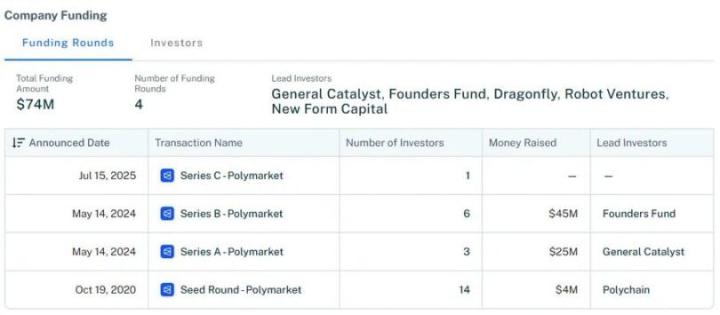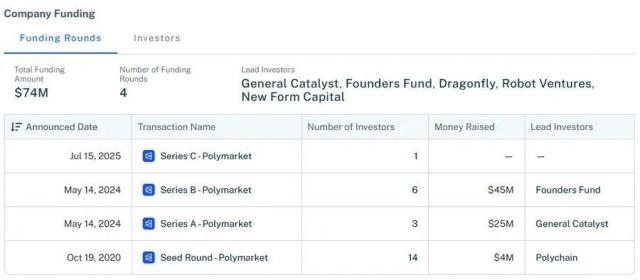Written by: Peggy, Jaleel Plus Six
On July 19, 2025, according to CNBC, Bullish has officially submitted an IPO filing to the U.S. Securities and Exchange Commission (SEC), planning to list on the New York Stock Exchange with the stock code "BLSH". This is another crypto company aiming for the U.S. stock market after Circle and Coinbase.
According to the prospectus, as of the first quarter of 2025, Bullish's cumulative trading volume has reached $1.25 trillion, with an average daily trading volume of over $2.5 billion in the first quarter. Among this, Bitcoin trading volume reached $108.6 billion, a year-on-year growth of 36%.
In the most profitable CEX track in the crypto, Bullish is not a familiar name, but in fact, its "origin" is quite distinguished.
In 2018, EOS emerged out of nowhere, claiming to be the terminator of Ethereum. The company behind it, Block.one, rode this wave to conduct the longest and highest-amount ICO (Initial Coin Offering) in history, raising an astonishing $4.2 billion.
A few years later, when EOS's popularity faded, Block.one "started over" and turned to create a crypto exchange platform focusing on compliance and targeting the traditional financial market - Bullish, and was thus "shown the door" by the EOS community.
In July 2021, Bullish was officially launched. The initial startup funds included: $100 million in cash invested by Block.one, 164,000 Bitcoins (worth about $9.7 billion at the time), and 20 million EOS; external investors also added $300 million, including PayPal co-founder Peter Thiel, hedge fund manager Alan Howard, and well-known crypto investor Mike Novogratz.
Close to "Circle", Distant from "Tether", Bullish is "Committed to Compliance"
Bullish's positioning has been clear from the beginning: scale is not important, but compliance is.
Because Bullish's ultimate goal is not to earn profits in the crypto world, but to become a "listable" regular trading platform.
Before officially operating, Bullish reached an agreement with a listed company, Far Peak, to invest $840 million to acquire 9% of its shares and merge for $2.5 billion, thus achieving a roundabout listing and lowering the traditional IPO threshold.
Media reports at the time valued Bullish at $9 billion.
The CEO of the merged company, Far Peak, Thomas, is now Bullish's CEO. He has a strong compliance background: previously the Chief Operating Officer and President of the New York Stock Exchange, performing excellently; establishing deep connections with Wall Street giants, CEOs, and institutional investors; with extensive resources in regulation and capital.
It's worth mentioning that Farley's external investments and acquisitions in Bullish are not many, but they are notable in the crypto world: Bitcoin staking protocol Babylon, re-staking protocol ether.fi, blockchain media CoinDesk.
In short, Bullish can be said to be the most "Wall Street-like" trading platform in the crypto world.
But ideals are full, and reality is harsh. Compliance is much more difficult than they imagined.
With the U.S. regulatory attitude becoming increasingly tough, Bullish's original merger and listing agreement was terminated in 2022, and the 18-month listing plan fell through. Bullish had also considered acquiring FTX to achieve rapid expansion, but it ultimately did not happen. Bullish was forced to seek a new compliance path - such as turning to Asia and Europe.
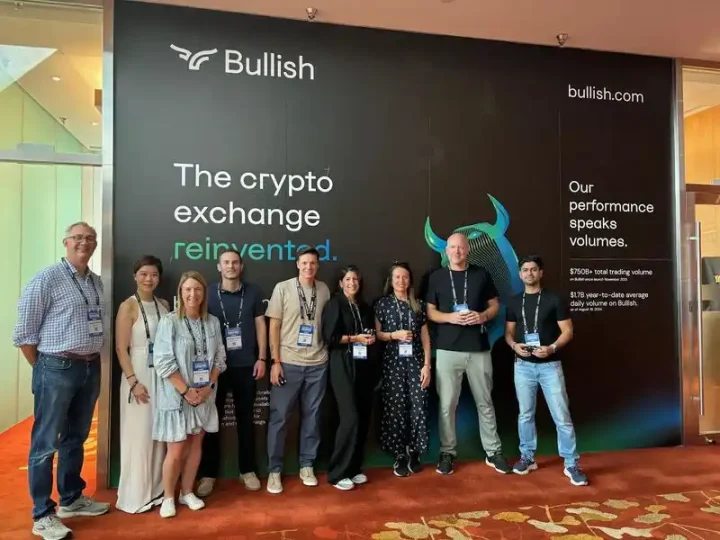
Bullish at the Hong Kong Consensus Conference
Bullish obtained a Type 1 license (securities trading) and Type 7 license (automated trading services) from the Hong Kong Securities and Futures Commission at the beginning of this year, as well as a virtual asset trading platform license; additionally, Bullish received a license from the German Federal Financial Supervisory Authority (BaFin) for crypto asset trading and custody.
Bullish has about 260 employees globally, with over half stationed in Hong Kong, the rest distributed in Singapore, the United States, and Gibraltar.
Another obvious manifestation of Bullish's "commitment to compliance" is: close to "Circle", distant from "Tether".
On the Bullish platform, the first few trading pairs with the largest trading volume are USDC, not USDT, which has a larger circulation and longer history. This reflects its clear stance on regulatory attitude.
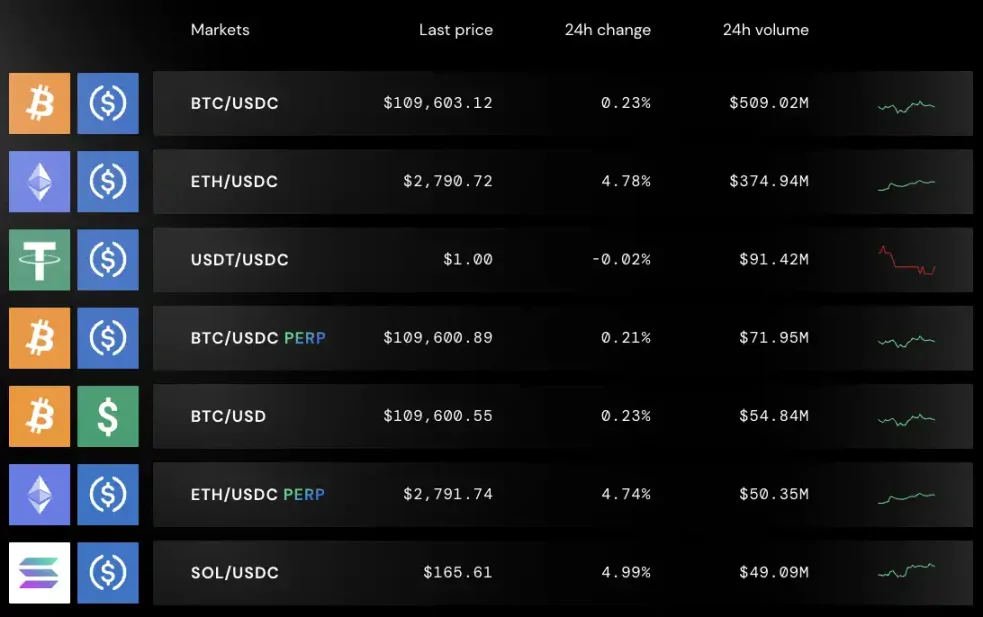
In recent years, with USDT continuously facing regulatory pressure from the U.S. SEC, its market dominance has begun to waver. On the other hand, USDC, as a stablecoin jointly launched by the compliant company Circle and Coinbase, not only successfully listed on the U.S. stock market but also became the "first stablecoin stock" favored by the capital market, with an excellent stock price trend. With good transparency and regulatory adaptability, USDC's trading volume continues to soar.
According to the latest report by Kaiko, USDC's trading volume on centralized exchanges (CEX) has significantly increased in 2024, reaching $38 billion in March alone, far higher than the monthly average of $8 billion in 2023. Among them, Bullish and Bybit are the two platforms with the largest USDC trading volume, together accounting for about 60% of the market share.
Bullish and EOS's "Love-Hate Relationship"
If one sentence were to describe the relationship between Bullish and EOS, it would be "ex and current".
Although the news of Bullish secretly submitting an IPO application caused A (original EOS)'s token price to rise by 17%, in fact, the relationship between the EOS community and Bullish is not good, because Block.one abandoned EOS and then embraced Bullish.
Back to 2017, the public chain track was in its golden age. Block.one released a white paper for EOS, a super public chain project shouting "million TPS, zero transaction fees", which attracted global investors. Within a year, EOS raised $4.2 billion through ICO, breaking industry records and igniting a fantasy of being the "Ethereum terminator".
However, the dream started quickly and collapsed just as fast. After EOS mainnet went online, users quickly discovered that this chain was not as "invincible" as advertised. Transfers were free, but CPU and RAM had to be staked, with a complex process and high operational barriers; node elections were not the imagined "democratic governance" but quickly controlled by large holders and exchanges, with issues like bribery and vote swapping.
But what truly accelerated EOS's decline was not just technical issues, but more internal resource allocation problems at Block.one.
Block.one originally promised to use $1 billion to support the EOS ecosystem, but did the exact opposite: buying U.S. bonds in large quantities, hoarding 160,000 Bitcoins, investing in the failed social product Voice, and using money to trade stocks and buy domain names... Very little was actually used to support EOS developers.
At the same time, power was highly centralized within the company, with core executives almost entirely composed of Block.one founder BB's relatives and friends, forming a small "family business" circle. After 2020, BM announced leaving the project, which became a precursor to Block.one and EOS's complete relationship breakdown.
What truly ignited the EOS community's anger was the emergence of Bullish.
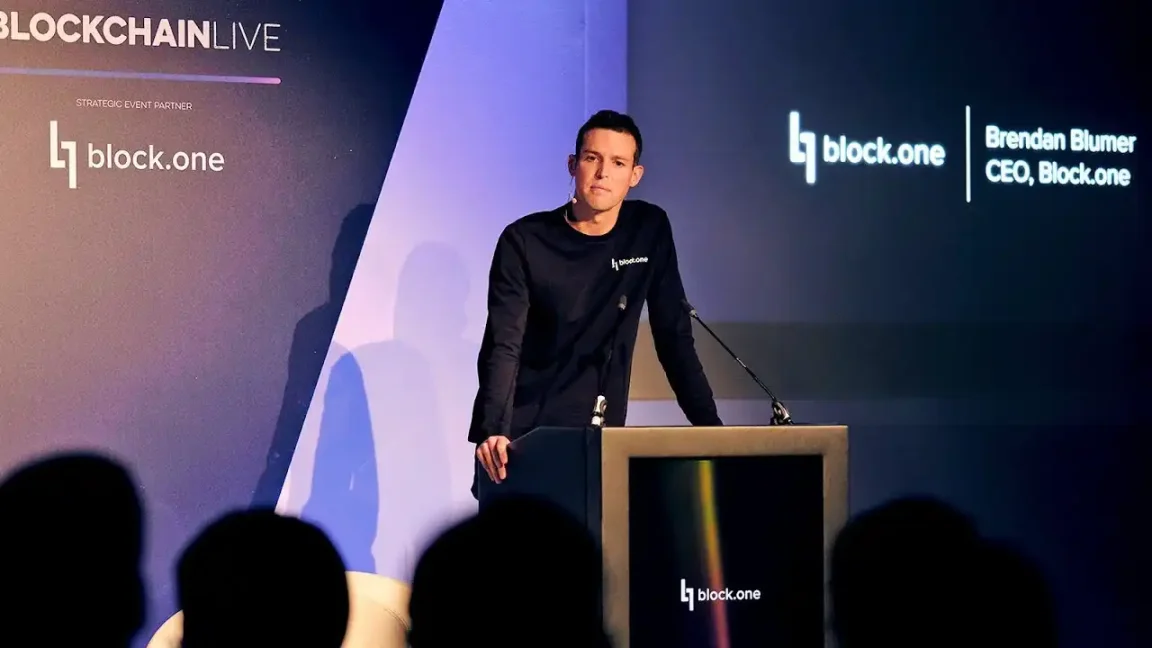
Block.one founder BB
In 2021, Block.one announced the launch of the crypto trading platform Bullish, claiming to have completed $10 billion in financing, with a luxurious list of investors including PayPal co-founder Peter Thiel and Wall Street veteran Mike Novogratz. This new platform focused on compliance and stability, building a "bridge" of crypto finance for institutional investors.
However, this Bullish was almost unrelated to EOS in both technology and brand - not using EOS technology, not accepting EOS tokens, not acknowledging any connection to EOS, not even offering the most basic gratitude.
For the EOS community, this was nothing short of an open betrayal: Block.one used the resources accumulated from building EOS to start a "new love". And EOS was left behind.
Thus, the counterattack from the EOS community began.
At the end of 2021, the community initiated a "Fork Uprising" to try to cut off Block.one's control. The EOS Foundation, as a community representative, began negotiations with Block.one. However, after a month of discussions, both parties failed to reach a consensus. Eventually, the EOS Foundation joined 17 nodes to revoke Block.one's power status and remove them from the EOS management. In 2022, the EOS Network Foundation (ENF) launched a legal lawsuit, accusing them of betraying their ecosystem promises; in 2023, the community even considered using a hard fork to completely isolate Block.one and Bullish's assets.
After the separation between EOS and Block.one, the EOS community engaged in a years-long litigation over the ownership of initially raised funds, but Block.one still retains ownership and usage rights of the funds.
In the eyes of many EOS community members, Bullish is not a "new project", but more like a symbol of betrayal, and this Bullish that secretly submitted an IPO application has always been the "new love" that exchanged their ideals for reality - glamorous, yet shameful.
In 2025, to cut ties with the past, EOS officially renamed itself Vaulta, building Web3 banking services on the public chain, and simultaneously renaming the token EOS to A.
How Much Money Does the Extremely Wealthy Block.one Have?
We all know that Block.one raised $4.2 billion early on, becoming the largest financing event in crypto history. Theoretically, these funds could support EOS's long-term development, support developers, promote technological innovation, and allow the ecosystem to grow continuously. However, when EOS ecosystem developers begged for funding, Block.one only threw out a $50,000 check - not even enough to pay two months' salary for a Silicon Valley programmer.
"Where did the $4.2 billion go?" the community asked.
A partial answer was disclosed in BM's email to Block.one shareholders on March 19, 2019: As of February 2019, Block.one's total assets (including cash and invested funds) were $3 billion. Of these $3 billion, approximately $2.2 billion was invested in US government bonds.
Where did the $4.2 billion go? Broadly speaking, three main directions: $2.2 billion in government bonds - low-risk, stable returns, ensuring wealth preservation; 160,000 bitcoins; small stock trading and acquisition attempts, such as the failed Silvergate investment and purchasing the Voice domain.
Many people don't know that Block.one, EOS's parent company, is currently the private enterprise holding the most bitcoins, with a total of 160,000 BTC, 40,000 more than stablecoin giant Tether.

Data source: bitcointreasuries
At the current price of $117,200, these 160,000 BTC are worth approximately $18.752 billion. In other words, the appreciation of these bitcoins alone has earned Block.one about $14.5 billion on paper, approximately 4.47 times the original ICO fundraising amount.
From a "cash flow is king" perspective, Block.one is very successful today, and could even be considered more "forward-looking" than MicroStrategy, and one of the most profitable "project parties" in crypto history. However, they achieved this not by "building a great blockchain", but by "how to best preserve principal, expand assets, and exit smoothly".
This is another ironic and real side of the crypto world: in the crypto space, the winner might not be the one with the "best technology" or the "most passionate ideal", but possibly the one most adept at compliance, most skilled at reading the situation, and best at retaining money.



